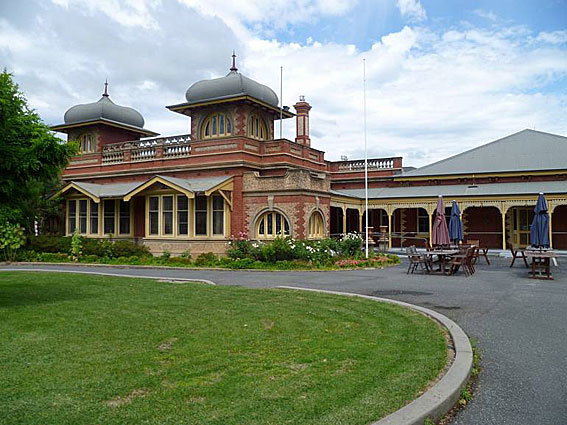
'Adamshurst', Albury
[photograph by M. Johnson – Albury City Council (n.d.)]
Historical and Technical Documentation by John Maidment
© OHTA 2015 (last updated July 2020)

'Adamshurst', Albury
[photograph by M. Johnson – Albury City Council (n.d.)]
Historical and Technical Documentation by John Maidment
© OHTA 2015 (last updated July 2020)
'Adamshurst' is a large heritage-listed mansion located in David Street, Albury, NSW and consists of two major buildings, now interconnected. The larger part dates from 1907 and has twin towers with Indian saracenic cupolas; the interior includes a large ballroom with Wunderlich pressed metal ceilings. It was built by George Adams, proprietor of the Albury Banner.1
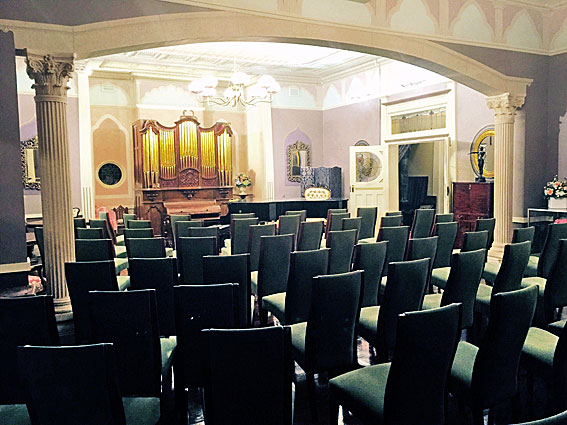
'Adamshurst', Albury – the ballroom and organ
[photograph by James Flores (April 2017)]
The pipe organ is located at one end of the ballroom and appears to date from around 1840 judged by the style of the carved casework.2 It is likely to have been built by an amateur organbuilder, probably a skilled cabinet maker, for a house at Ben Rhydding, Yorkshire (just east of Ilkley), incorporating trade metal pipework, possibly made by Courcelle. It was later placed at Ilkley and Eccleshill Baptist Churches. More recently it had been installed in the lower chapel of Heaton Baptist Church, a suburb of Bradford, UK.3
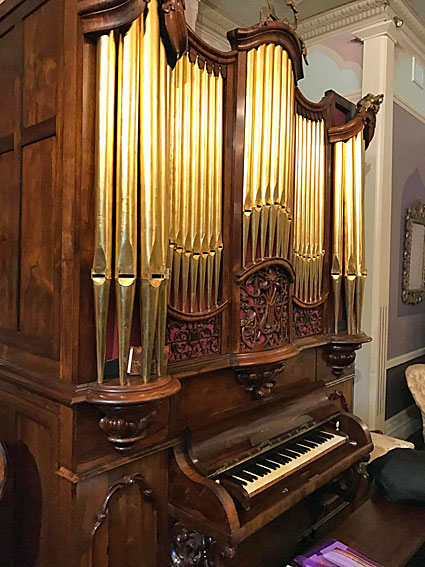
'Adamshurst', Albury – the organ
[photograph by James Flores (April 2017)]
In 2006, it received a thorough restoration by Henry Willis & Sons Ltd, Liverpool. The reservoir was releathered, the soundboard reconstructed with a larger pallet well to improve winding and the action was completely overhauled with many new parts made from maple. The pipework was repaired and regulated, the Stop Diapason treble reinstated using old Keraulophon pipes cut down and stoppered. The soundboard was raised two inches to refit the action, the casework repaired, strengthened and waxed, the pedalboard stripped, new oak facings added to keys, reassembled and strengthened.4
The instrument includes very elaborate mahogany casework, with the keyboard (with nicely moulded fronts) supported on elaborately carved brackets. The drawstops have script engraving. The height of the casework was reduced for its Heaton installation and a carved figure surmounting the case removed.
It was installed at Albury by Wakeley Pipe Organs Pty Ltd in 2015 who carried out minor repairs and installed a new blower silencing cabinet.
| MANUAL Open Diapason Stop Diapason Bafs Stop Diapason Dulciana Principal Fifteenth |
8 8 8 8 4 2 |
TG GG – TF# TG TC |
Pedal pulldowns 30 notes
Compass: 59 (GG-f)/30
Upper part of pedals (G-f1) coupled to manual at 16ft pitch); notes from low C-F# of pedal "return" to octave above
2 composition pedals
Mechanical key and stop action5

'Adamshurst', Albury – the organ and console
[photograph by James Flores (April 2017)]
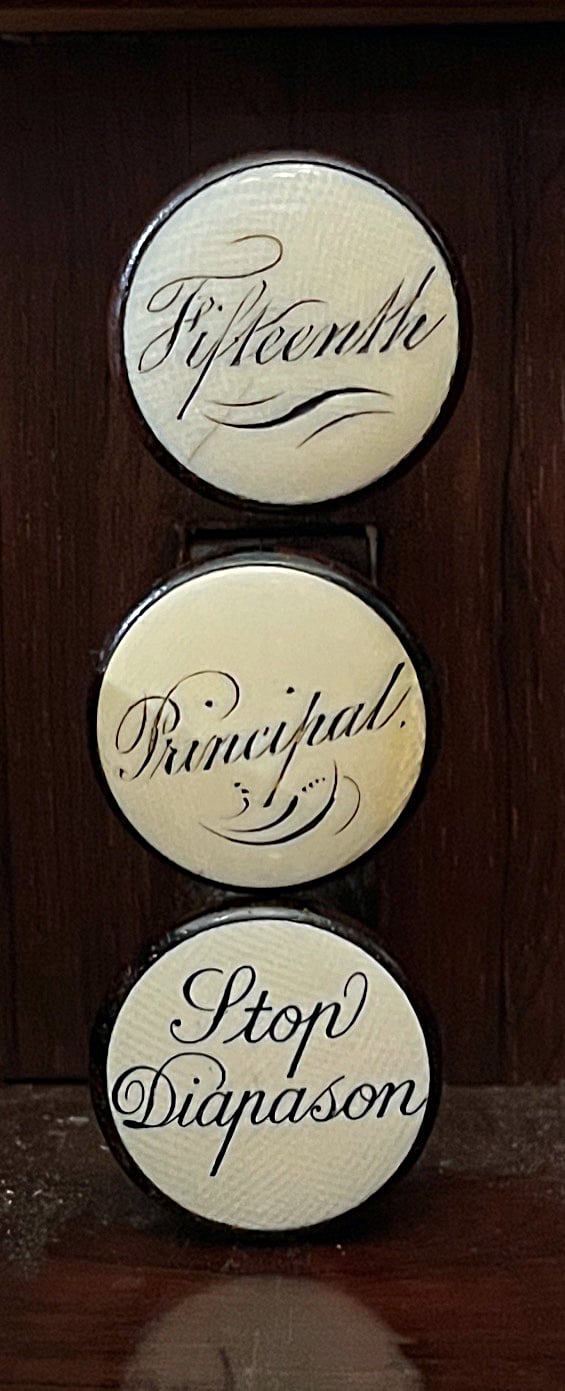
'Adamshurst', Albury – right-hand stop jamb
[photograph by JTrevor Bunning (October 2023)]
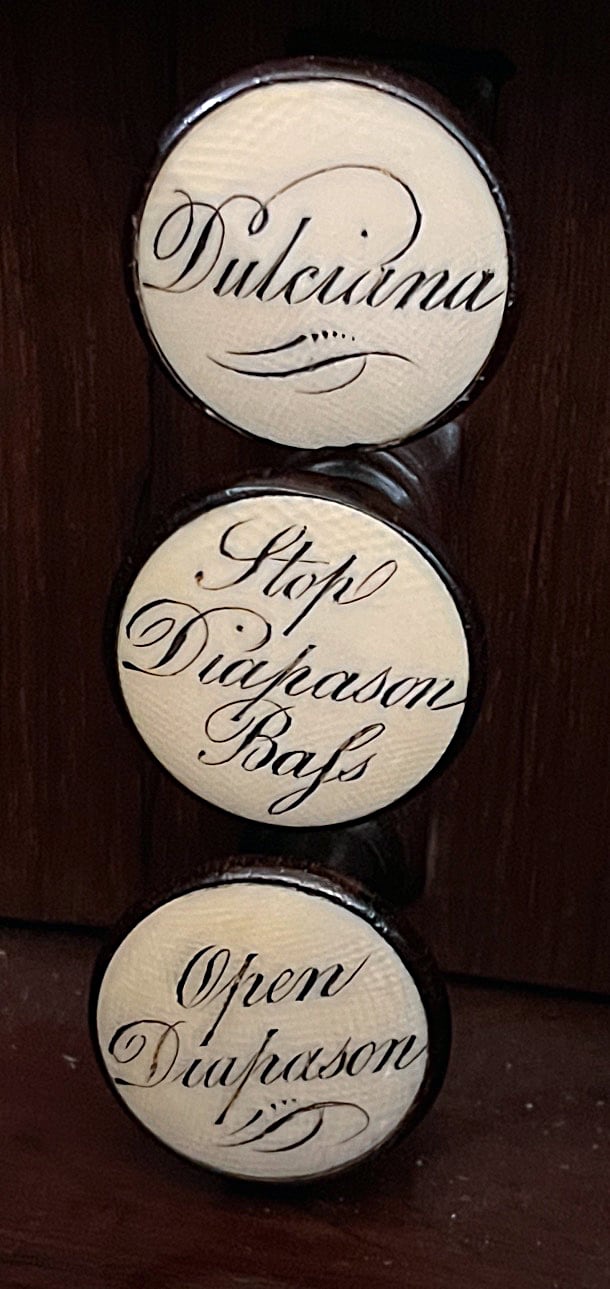
'Adamshurst', Albury – left-hand stop jamb
[photograph by Trevor Bunning (October 2023)]
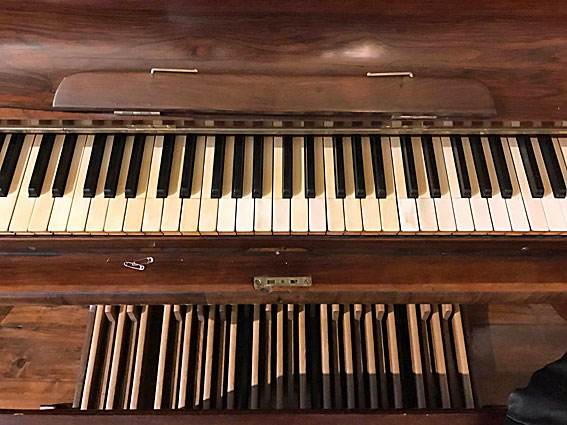
'Adamshurst', Albury – pedalboard
[photograph by James Flores (April 2017)]
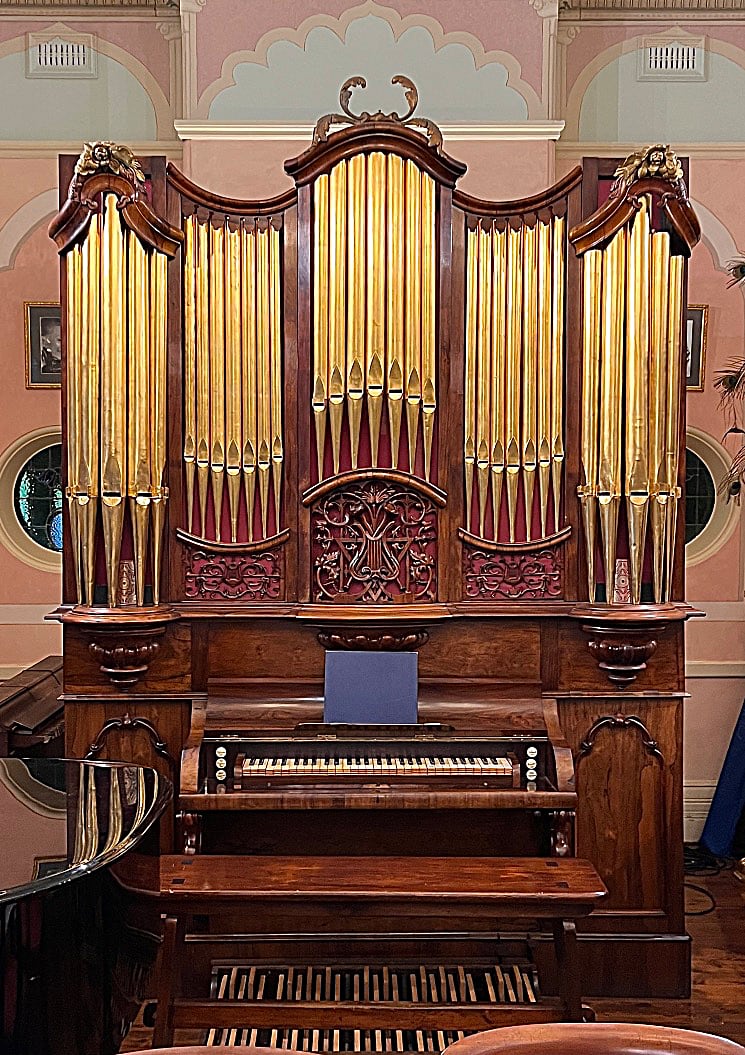
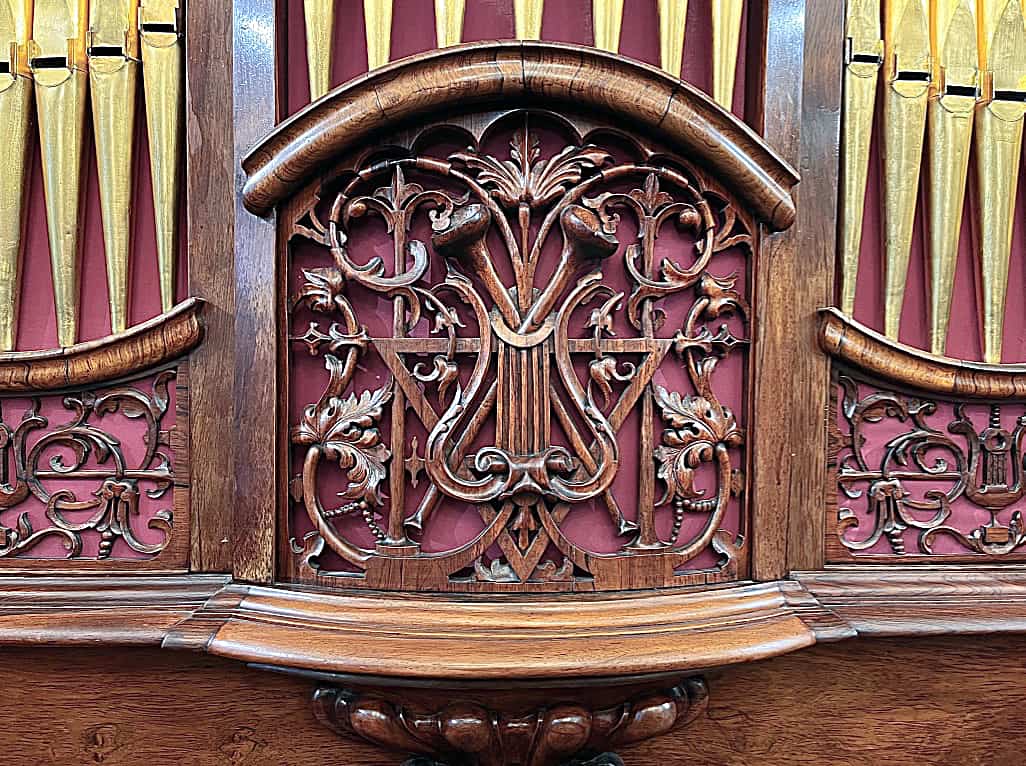

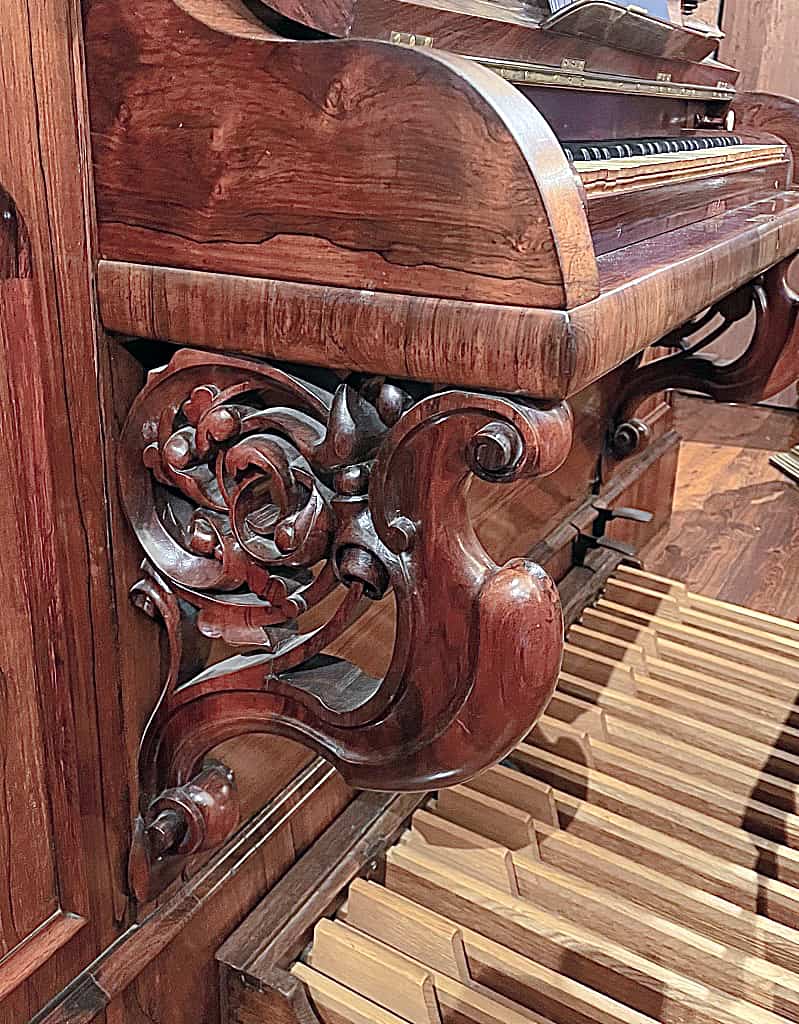
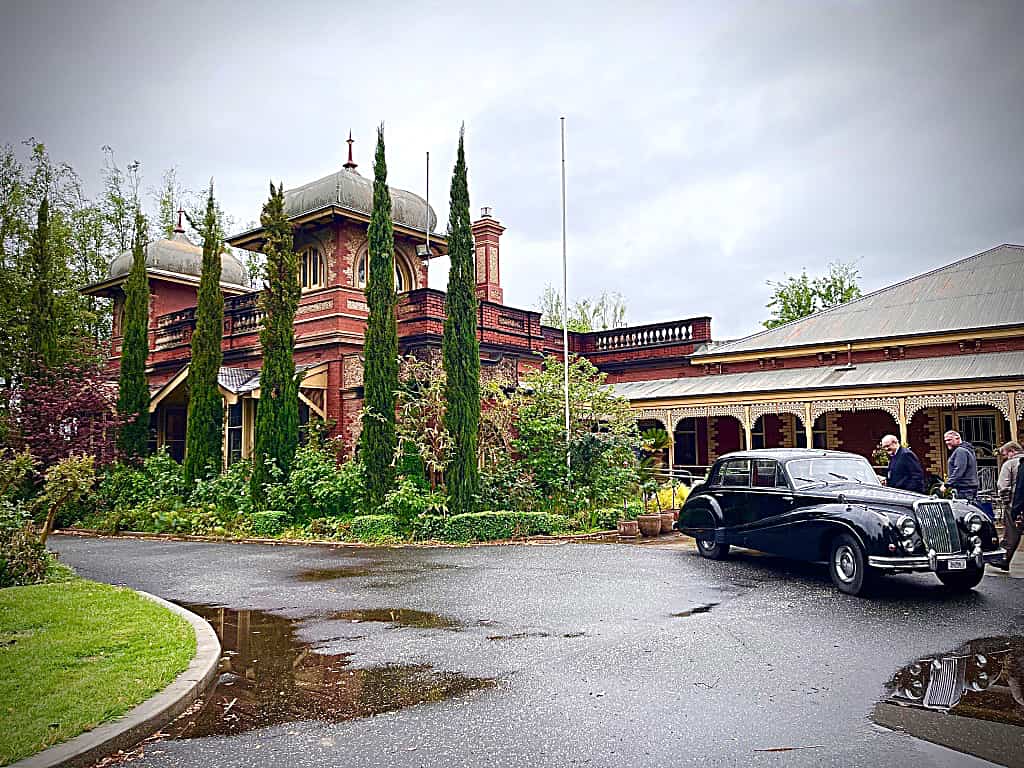
Photos above: Trevor Bunning (October 2023)
1 https://www.environment.nsw.gov.au/heritageapp/ViewHeritageItemDetails.aspx?ID=1000021, accessed 16 July 2020
2 The very detailed carving is typical of this period, rather than the earlier Georgian or Regency periods
3 Details from the National Pipe Organ Register (UK)
4 Ibid., and details supplied by Henry Willis & Sons Ltd
5 Specification noted from photographs